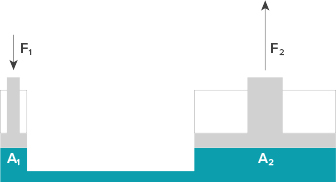What does a mechanical engineer do?
Overview
Automotive
Aerospace
Robotics
Exciting new areas
Renewable energy (like wind, solar)
3D printing

Nanotechnology
Functions of a mechanical engineer
Design
In this virtual tour you will understand how a mechanical engineer designs products by working on similar engineering assignments.
Note:
Assignments are quite simplified compared to real work so that high school students can solve them
Tour Compatibility: Tours can be viewed well only on laptops/desktops and not on mobile phones currently.
What will I study in mechanical engineering?
Fluid Mechanics
Study of fluids (liquids, gases) at rest and in motion, and the forces involved
Practical example
Fluid systems in aircrafts, pumps, brakes
Related high school topics
Pressure in fluids, streamline flow, Bernoulli’s principle, viscosity, Reynolds number, surface tension
Mechanics of Solids
Study of motion and deformation of solids under the action of forces
Practical example
Load carrying components for vehicles
Related high school topics
Elastic behaviour of solids, stress and strain, Hooke’s law, stress-strain curve, elastic moduli
Thermodynamics
Study of heat and temperature and their relation to energy and work
Practical example
Coffee-maker, air-conditioner
Related high school topics
Thermal equilibrium, heat, internal energy, work, laws of thermodynamics, specific heat capacity, thermodynamic state variables & equation of state, heat engines, refrigerators, heat pumps, Carnot engine
Pre-requisites
Understanding of below concepts and equations (wherever mentioned) is required
Pascal’s law
Pascal’s law states that a change in pressure at any point in a fluid in a closed container is transmitted undiminished to all points in the fluid.

By Pascal’s law:
P1 = P2
F1/A1 = F2/A2 (Since pressure equals force per unit area)
(where P = pressure, F = force, A = area)
Friction force
Kinetic friction force between two solid surfaces in contact is the force that opposes the relative motion of those surfaces.
f = μN
(where f = friction force, μ = coefficient of friction, N = normal force)
Torque
Torque is the cross product of position vector (from the axis of rotation to the point where force is applied) and the force vector (which tends to produce rotational motion).
τ = r x F
(where τ = torque vector, r = position vector, F = force vector)
Stress
When a body is subjected to a deforming force, a restoring force is developed in the body. This restoring force per unit area is known as stress.


